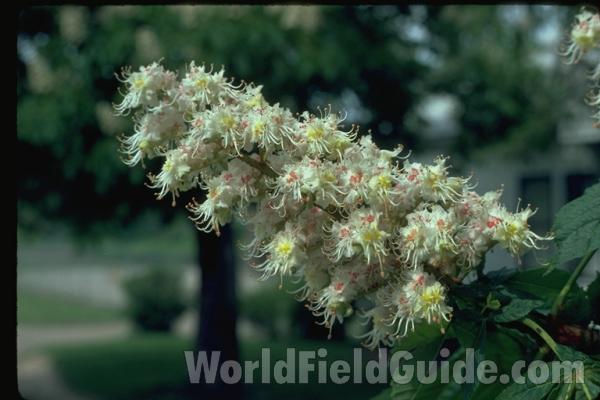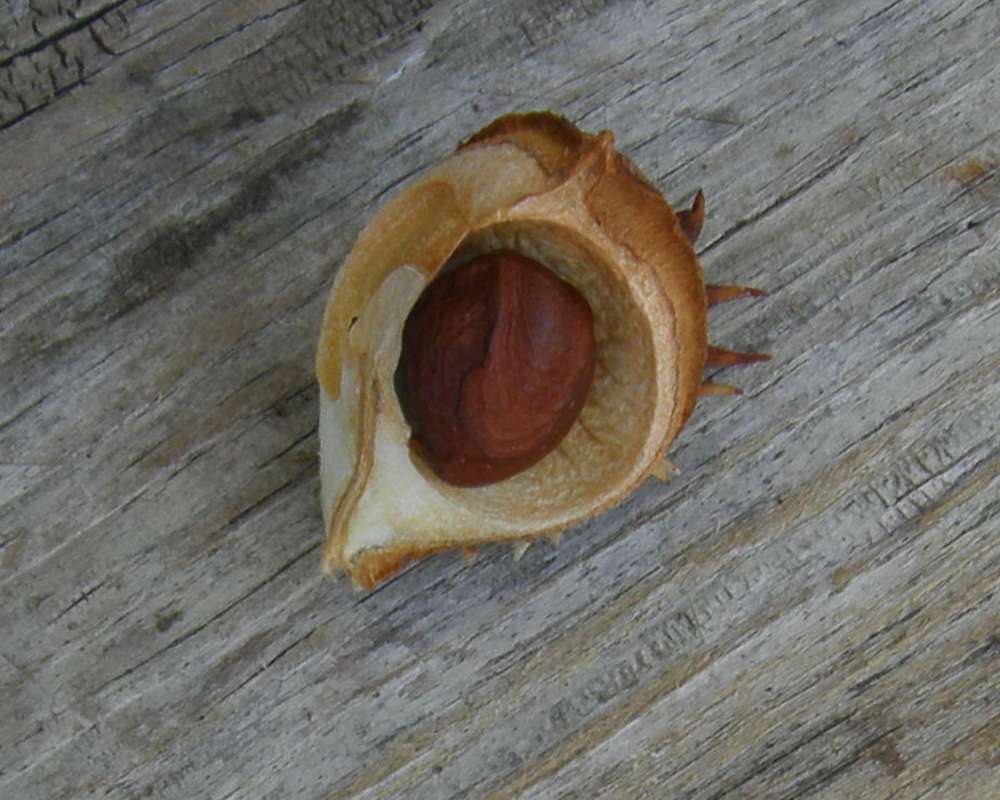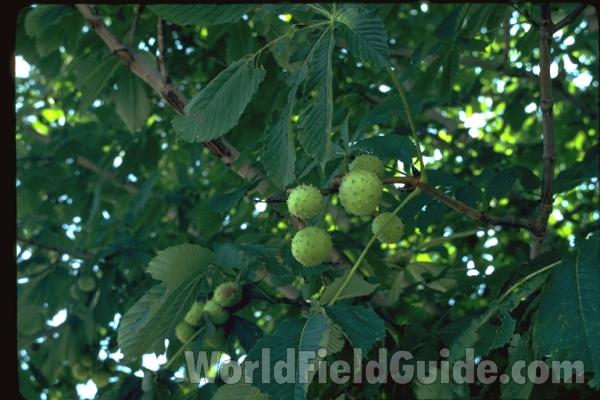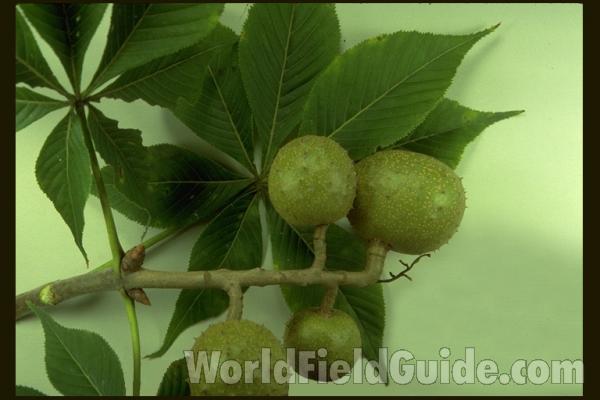SPECIES INFO
Horse Chestnut Trees (Aesculus hippocastanum) were originally from northern Greece, but are now planted widely in North America and Eurasia as ornamentals for their masses of spring flowers. The Horsechestnut has compound leaves with the five to seven leaflets all connected to the same place. The white flowers are in panicles up to 12 inches tall.Horsechestnut and buckeye (genus Aesculus) have opposite palmately compound leaves with toothed leaflets. The large showy panicles of flowers that appear in the spring make many of these species desirable landscape specimens. There are about 15 species of trees and shrubs that are native to the northern hemisphere. The horsechestnut (Aesculus hippocastanum) of Eurasia is considered established in the United States. Kartesz lists 7 species, 7 hybrids and 4 four subspecies as growing in greater North America, including the United States, Canada, Hawaii, Greenland, Puerto Rico and the U.S. Virgin Islands. Although several of the species can be large trees, others are typically bushes.
Buckeye or Horse Chestnut Family (Hippocastanaceae) is a small family of trees and shrubs of only about twenty-five species of largely New World Distribution. Seven of these species are established in greater North America. (Some authors move the maple family into this family and entitle this family as the Sapindaceae.)
Sapindales Order is a diverse group of mostly trees and shrubs. In older taxonomic works there were about 25 different families in this order. Some modern authors retain only about 10 families. This order is very widespread in the world, and seemingly only absent from a few dry deserts.
Dicots (Dicotyledoneae Class) are the predominant group of vascular plants on earth. With the exception of the grasses (Monocots) and the Conifers (Gymnosperms), most of the larger plants that one encounters are Dicots. Dicots are characterized by having a seed with two outer shell coverings.
Some of the more primitive Dicots are the typical hardwood trees (oaks, birches, hickories, etc). The more advanced Dicots include many of the Composite (Aster) Family flowers like the Dandelion, Aster, Thistles, and Sunflowers. Although many Monocots reach a very high degree of specialization, most botanists feel that the Dicots represent the most advanced group of plants.
Seed plants (Phylum Embryophyta) are generally grouped into one large phylum containing three major classes: the Gymnosperms, the Monocots, and the Dicots. (Some scientists separate the Gymnosperms into a separate phylum and refer to the remaining plants as flowering plants or Angiospermae.)
For North American counts of the number of species in each genus and family, the primary reference has been John T. Kartesz, author of A Synonymized Checklist of the Vascular Flora of the United States, Canada, and Greenland (1994). The geographical scope of his lists include, as part of greater North America, Hawaii, Alaska, Greenland, Puerto Rico, and the Virgin Islands.
Kartesz lists 21,757 species of vascular plants comprising the ferns, gymnosperms and flowering plants as being found in greater North America (including Alaska, Hawaii, Greenland, Puerto Rico and the Virgin Islands.
There are estimates within the scientific world that about half of the listed North American seed plants were originally native with the balance being comprised of Eurasian and tropical plants that have become established.
Plant kingdom contains a large variety of different organisms including mosses, ferns, and seed plants. Most plants manufacture their energy from sunlight and water. Identification of many species is difficult in that most individual plants have characteristics that have variables based on soil moisture, soil chemistry, and sunlight.
Because of the difficulty in learning and identifying different plant groups, specialists have emerged that study only a limited group of plants. These specialists revise the taxonomy and give us detailed descriptions and ranges of the various species. Their results are published in technical journals and written with highly specialized words that apply to a specific group.
On the other hand, there are the nature publishers. These people and companies undertake the challenging task of trying to provide easy to use pictures and descriptions to identify those species.














